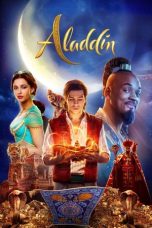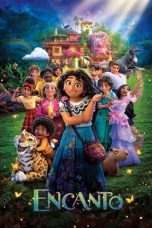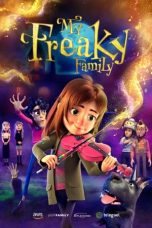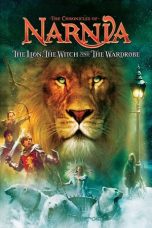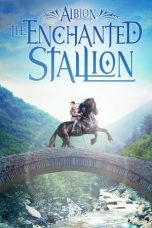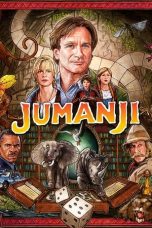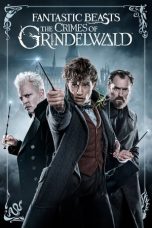- Source: Magical Hat
- Lionel Messi
- Nik Adruce
- Boruto: Naruto Next Generations
- Hunter × Hunter
- Tokyo Ghoul
- Black Clover
- Great Teacher Onizuka
- Naoko Matsui
- Cristiano Ronaldo
- Pierrot (perusahaan)
- Magical Hat
- Decap Attack
- Magic hat
- Disney's Hollywood Studios
- Witch Hat Atelier
- Hat Trick (Once Upon a Time)
- Kid Kool
- Hijitus
- The Legend of Zelda: The Minish Cap
- Otfried Preußler
Aladdin (2019)
My Freaky Family (2024)
The Chronicles of Narnia: The Lion, the Witch and the Wardrobe (2005)
The SpongeBob Movie: Sponge Out of Water (2015)
Albion: The Enchanted Stallion (2016)
Jumanji (1995)
No More Posts Available.
No more pages to load.
Magical Hat (まじかるハット, Majikaru Hatto) is a Japanese manga series written and illustrated by Yōji Katakura (March 13, 1949-April 8, 1997). It was serialized in many of Shogakukan's magazines in 1989, such as Shogaku Ichinensei, Shogaku Ninensei, Shogaku Shi-nensei, Shogaku Roku-nensei and Bessatsu CoroCoro Comic. The series was also adapted into an anime produced by Studio Pierrot, which aired on Fuji Television from October 18, 1989 to July 6, 1990. Two volumes of the manga were published by Tentomushi Comics in October 1989 and May 1990, though it was left unfinished due to Katakura's death in 1997.
Plot
63,000 years ago, there was a hero who fought against the demons of the Underworld, who had conspired to conquer the Earth. The legendary hero was called Magical Hat. According to legend, the hero used his mysterious magical psychic powers to defeat the demons and sealed the Underworld under the island of Usontō ("Uson Island"), where the demons have remained ever since, isolated by a magical seal.
In the present day, a young boy named Hat comes to the island with his parents, who are researching the legends of the Underworld. Hat's father, an archaeologist, plans to research the area near a large volcano on the island, where the legendary Magical Hat was believed to have engaged in battle. Suddenly, an earthquake hits the island and Hat falls into the volcano, breaking the seal to the Underworld. There, King Aleph rules as a kind and just king, keeping the Underworld in order. His brother in-law, Guwaru the Ziarc, opposes him and has plans to seize the throne. When Hat enters the Underworld, Guwaru and Aleph are in a struggle for power. Guwaru banishes Aleph, and breaks Usontō up into seven separate islands.
After entering the Underworld and meeting Guwaru, Hat discovers a statue which possesses the spirit of the legendary Magical Hat. He is told that he is a descendant of Magical Hat, and that he shall realize his destiny as the second incarnation of the hero, to stop Guwaru, reunify the continent and restore King Aleph to the throne. Thus, Hat becomes transformed into the new Magical Hat, and the adventure begins. The turban that Hat wears contains powerful magic that the wearer can control. Using the magical powers of this turban, he can defeat Guwaru and complete his quest. However, if Guwaru gets a hold of the turban, all hope is lost. With the help of his partners, Hoto-ken, Grandpa Tau, Spin and Roboggu, Hat must stop Guwaru from his new reign once and for all.
Characters
= Main characters
=Hat (ハット, Hatto)
Voiced by: Kazue Ikura
A 10-year-old boy who comes to Usontō with his parents. During an earthquake, he falls into the island's volcano, and ends up in the Underworld, where he learns that he is the descendant of Magical Hat. He uses the magical powers of the turban that he wears to defeat Guwaru and complete his quest. Hat's design was inspired by Fuji TV's Yume Kōjō '87 mascot Imajin.
Hoto-ken (ホットケン, Hottoken)
Voiced by: Tomiko Suzuki
The canine Prince of the Underworld and the son of King Aleph. Despite his title, he is meek and cowardly, though still quick to anger whenever he gets abused or mistaken for a dog. He is usually the victim of bullying, especially by Kowaru.
Grandpa Tau (タウじいさん, Tau Jīsan)
Voiced by: Jōji Yanami
An elderly man and King Aleph's younger brother. He becomes acquainted with Hat and Hoto-ken after the Underworld launches its attack on the surface. He is very knowledgeable and occasionally helpful, but also has an uncomfortable, perverted side. He also serves as the narrator.
Spin (スピン, Supin)
Voiced by: Naoko Matsui
An independent, resourceful yet selfish teenage girl with a fondness for sweets and firearms, who has taken it upon herself to rid her home, the Mountain Island, of its sudden and deleterious fascination with gold.
Roboggu (ロボッグ, Roboggu)
Voiced by: Kumiko Nishihara
A tiny egg-like robot and an "Ultimate Surefire Rescue Machine" created by Grandpa Tau. Based on the juvenile ecology of the Phoenix tribe, he is capable of transforming into any mechanical object, such as a helicopter or submarine, and ends most of his sentences with "nya". At the beginning of the manga's serialization, he spoke in an expressive yet dumb voice, but in the anime, he spoke in a lisping tone, which was carried over to the manga.
= Antagonists
=Guwaru the Ziarc (グワル・ザ・ジアーク, Guwaru za Jiāku)
Voiced by: Kenji Utsumi
A powerful demon in the Underworld who opposes King Aleph, his brother-in-law. As a noble, he is the one most eager to take the fight back to the human race that sealed the Underworld away, and plots to conquer the Earth. His powers of deception make him a shrewd and dangerous foe.
Kowaru the Ziarc (コワル・ザ・ジアーク, Kowaru za Jiāku)
Voiced by: Mie Suzuki
Guwaru's son, King Aleph's nephew and Hoto-ken's cousin, a kitsune-like demon with a bratty, selfish personality but a similar amount of cunning to his father. He and Dogu try to come up with a new scheme to steal Hat's turban and turn it over to Guwaru, and he harasses Hat and his friends at every chance he gets. Kowaru also has a crush on Spin, which she takes advantage of. He hates vegetables, especially green peppers.
Dogu (ドグー, Dogū)
Voiced by: Chafurin
Guwaru and Kowaru's faithful dogū servant. He can float and wield his paper-thin arms like whips, has a family, and ends most of his sentences with "dogū".
CO2 (CO2, CO2)
Voiced by: Minoru Inaba
A henchman working under Guwaru and Kowaru, who rules the Jungle Island.
Haōju (ハオージュ, Haōju-goe)
Voiced by: Masahiro Anzai
A henchman working under Guwaru and Kowaru, who rules the Sand Island.
= Others
=King Aleph (アレフ王, Arefu Ō)
Voiced by: Shigezō Sasaoka
The King of the Underworld and Hoto-ken's father. He keeps the Underworld in order, until his brother-in-law, Guwaru, banishes him during a struggle for power.
Moranbo (モランボ, Moranbo)
Voiced by: Shūichi Ikeda
A young man living on the Jungle Island, who notices CO2's plan and resists alone.
Kunchan (クンチャン, Kunchan)
Voiced by: Sukekiyo Kameyama
A mysterious Chinese man who usually runs a ramen stall. His catchphrase is "Kunchan's ramen is delicious!" In the manga, he plays an important role as a person who can decipher ancient characters.
Officer Kenchan (ケンチャン, Kenchan)
Voiced by: Tomohiro Nishimura
A Chinese police officer and Grandpa Tau's childhood friend.
Hat's Parents (ハットの両親, Hatto no Ryōshin-goe)
Voiced by: Shinya Ōtaki (Dad (パパ, Papa)), Run Sasaki (Mom (ママ, Mama))
Hat's father and mother, who take him with them to Usontō to research the legends of the Underworld. Hat's father is an archaeologist, and plans to research the area near the island's volcano, where the legendary Magical Hat was believed to have battled with the demons.
= Petamo Beasts
=G-Konger (G・コンガー, G Kongā)
Voiced by: Toshiharu Sakurai
Z-Saura (Z・ザウラー, Z Zaurā)
Voiced by: Sukekiyo Kameyama
W-Eagler (W・イーグラー, W Īgurā)
Voiced by: Tomohiro Nishimura
Devil Kraken (デビルクラーケン, Debiru Kurāken)
Gingurobu (ギングロブ, Gingurobu)
Gilguinea (ギルギニ, Girugini)
Gargoyle (ガーゴイル, Gāgoiru)
Sea Golem (シーゴーレム, Shī Gōremu)
Media
= Anime
=A 33-episode anime series adaptation produced by Studio Pierrot aired on Fuji Television from October 18, 1989 to July 6, 1990, starting out on Wednesday nights at 6:30, but eventually jumping over to Friday near the end of the series. The anime was produced alongside the manga, and was part of a media mix by Sega, Pierrot and Fuji TV. Sega had creative input over the series as its main sponsor, and the exclusive rights to produce video games and toys. The series was directed by Akira Shigino, with Kotakara serving as the animation director. The screenplay was written by Kenji Terada. The characters were designed by Tsuneo Ninomiya. The music was produced by Takayoshi Watanabe, under the alias "Edison". The anime's opening theme is "Daijōbu, Daibōken" (大丈夫、大冒険, "It's Okay, It's a Big Adventure") by Naoko Nozawa, and has two ending theme songs: "Mera Tenten-Kirakura" (メラ・テンテンキラクラ) (episodes 1-23) by Nozawa and "Bye Bye Baby" (episodes 24-33) by Ītomo Seinen-tai/K-chaps!. The series contains plenty of slapstick gag elements.
The final episode was scheduled to be broadcast on June 29, 1990, but was delayed by one week due to a special news program related to the wedding of Fumihito, Crown Prince of Japan.
Episodes
= Video game
=Sega released a Mega Drive game based on the series on December 15, 1990, called Magical Hat no Buttobi Turbo! Daibōken (まじかるハットのぶっとびターボ!大冒険, Majikaru Hatto no Buttobi Tābo! Daibōken, trans. Magical Hat's Turbo Flight! Adventure) and developed by Vic Tokai. Magical Hat no Buttobi Turbo! Daibōken is an action platform game similar to Vic Tokai's Kid Kool and Psycho Fox. The player takes control of Hat to guide him through Usontō's seven islands, jumping on and punching enemies, grabbing items from statues, and fighting a boss at the end of each world. In each stage, the player can find Roboggu, who will help Hat out by acting as a projectile and a shield. The game has a wide range of different power-up items that can be obtained, which can give the player temporary invincibility, freeze all the enemies for a short time, give the player an extra-high jump, or even call in air support from a helicopter. At the end of each stage, the player can play a game of chance to win extra items and lives.
Japanese magazines Famitsu, Hippon Super, Beep! MegaDrive, Mega Drive Fan and Sega Saturn Magazine scored the game a 58%, 50%, 58%, 61%, and 62%, respectively. European magazines Joystick, Power Play, Computer and Video Games, The Complete Guide to Sega, Games-X, Sega Power and Sega Mega Drive Advanced Gaming scored the game a 70%, 71%, 84%, 90%, 63%, 100%, and 84%.
Due to Vic Tokai failing to secure the Magical Hat license outside Japan, the game was completely redone and released in 1991 as Decap Attack. The game features different characters, story, art, music, and level design, but has the same general gameplay.
References
External links
Official Pierrot website (in Japanese)
Official Pierrot website (in English)
Magical Hat (anime) at Anime News Network's encyclopedia
Magical Hat at MobyGames


